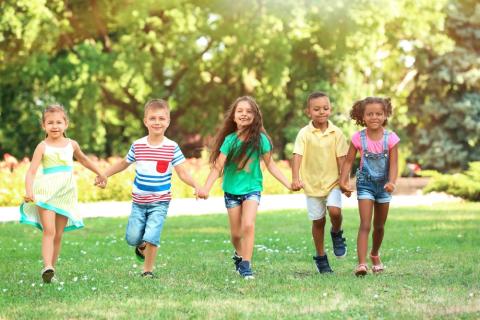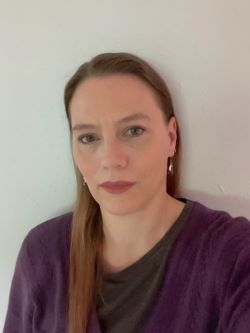World Children’s Day

The 20th of November is World Children’s Day, and this year, it marks the 35th anniversary of the adoption of the United Nations Convention on the Rights of the Child in 1989. Thinking about this anniversary got me thinking about time.
To an oak tree, 35 years is short; to a child, 35 years sounds like a long time. A longer time ago, 100 years in fact, in 1924, the first Declaration of the Rights of the Child was adopted by the League of Nations (the precursor to the UN); this was then extended and adopted by the UN in 1959, 65 years ago. Even the text of the Convention, adopted 35 years ago, took more than 10 years of discussions and drafting. Time has moved on, and the world we live in now is very different from 35 or 45 years ago, so how is the Convention still able to be relevant today?
The Conventions from the United Nations are monitored by committees which are able to interpret the rights within conventions through contemporary understanding. Each of these committees publishes documents stating their interpretations. Over the years, the Committee on the Rights of the Child have, to date, issued 26 ‘general comments’ (GC) on a variety of topics, from the ‘aims of education’ (GC No.1, 2001) to ‘the right of the child to the enjoyment of the highest attainable standard of health’ (GC No.15, 2013). Both of these examples relate to topics that form Convention articles, Art.29 on the aims of education and Art.24 on health. Some general comments reflect the changing world and address issues that either did not exist at the time of the Convention or have changed significantly since then. Two of the more recent general comments are examples of these: GC No. 25 (2021) is ‘on Children’s rights in relation to the digital environment’, and GC No.26 (2023) is ‘on children’s rights and the environment, with a special focus on climate change’. These two examples demonstrate the Committee’s ability to read contemporary issues into the spirit of the Convention. Imagine asking a child of today to use a computer from 1989 to write up a piece of schoolwork! The internet we are used to using every day did not exist in 1989, and none of the Convention articles refer to ‘digital’ or ‘computer’. Whereas, though the natural environment is mentioned in the Convention, it is not as a named right to a healthy environment. Reference to the natural environment or a healthy environment are found under Art.29 on the aims of education to ‘The development of respect for the natural environment’ (Art.29(1)(e)) and Article 24 on health that State Parties (countries) ‘shall take appropriate measures’ to ‘tak[e] into consideration the dangers and risks of environmental pollution’ (Art.24(2)(c)). In 1989, concerns about the environment and climate change did exist, and as described above, were reflected within the Convention text. Nevertheless, at that time, they were not as recognised or accepted to the extent they are today. The Committee on the Rights of the Child recognising this right within GC No.26 is in line with other UN bodies; notably, in 2022, the United Nations General Assembly recognised that everyone (including children) has a right to a healthy environment.
General comments are not the only way the Committee demonstrates its ability to interpret the Convention in accordance with current understanding. The monitoring process, in which State Parties (other organisations, such as NGOs, can also report to the Committee about a State Party) engage in a dialogue with the Committee about their implementation of the Convention, ends with the Committee publishing its ‘concluding observations’ report on the State Party. These reports include noting where the Committee thinks the State Party has made improvements; the report also raises concerns and makes recommendations. Within these reports, the Committee is able to further demonstrate its interpretation of the Convention rights. Using as an example again the concept of a child’s right to a healthy environment, in a recent study (MacDonald 2024) I looked at all of the concluding observations reports from the Committee to State Parties from 2000 up until 2022 (prior to the adoption of the general comment No.26) and recorded relevant references such as to the natural environment, healthy environment or climate change. This study looked at a number of factors, including under which articles the committee made relevant comments and how the frequency of comments has changed over time. Unsurprisingly, the study found that comments relating to the natural environment and climate change did increase over time, and interestingly, relevant comments were observed to be under a range of rights and in the more recent reports, the Committee even included subheadings relating to environmental health and the impact of climate change.
Overall, the study showed that over 70% of these reports had at least one relevant comment. So, despite the Convention being 35 years old, the Committee's ability to interpret its articles and the rights they contain enables it to be as relevant today as it was when the ink was drying.
All the best for World Children’s Day.
MacDonald, F. (2024). Environmental Rights and the Impact of Climate Change within the Committee on the Rights of the Child Concluding Observation Reports. The International Journal of Children's Rights 32, 3, 585-610, Available From: Brill https://doi.org/10.1163/15718182-32030005

Dr Fiona MacDonald
Fiona is the current Teaching Director for the Law School. She joined The Open University in 2022 as a Lecturer in Law.
Before studying law, Fiona studied business studies part-time while working in various industries. Having completed the law conversion course and the Bar Vocational Course, she was called to the Bar by the Inner Temple (2005). Subsequently, while working as a Magistrates Legal Advisor for HMCTS, she undertook the cross-qualification and was admitted to the Roll of Solicitors (2010). She currently does not practice law as she has focused on academic research and teaching in recent years, undertaking her PhD focusing on Children’s Rights (completed 2020).
She has taught and been involved in a range of legal modules, including criminal law, criminal litigation, family law, solicitors accounts, EU law, land law, legal study skills, and research skills.
Her educational journey has been less than traditional, and as a student with severe dyslexia, she is passionate about making education available and accessible to all.